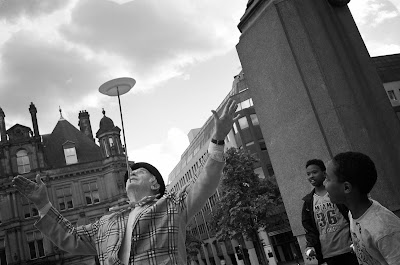I get so tired of reading the endless diatribes on camera user forums about the latest firmware, the best post-processing routines, the advantages of this four thousand quid aspherical lens over that two thousand quid non-aspherical lens, that sometimes I despair of photography. These technical matters are assumed to hold the key to 'IQ' (image quality), whereas in fact they have nothing to do with
quality, the mysterious characteristics of photography that make us return again and again to a picture as it gradually gives up its secrets...
As the Slow Food movement was a fight against the values and domination of fast food and junk meals, I think we need a Slow Photography movement to help us reassert the simple pleasures of taking pictures more meditatively, relishing every step of the process including the wait as film is processed and scanned and we work gradually through the images, assessing the merits of each one carefully, selecting, rejecting, revisiting, rejecting....
I look almost constantly at the
Magnum Photos website to remind myself that some of the greatest photos have been taken with the simplest of equipment. And that whatever it is that moves us about a picture has little to do with technical excellence and everything to do with content.
Pictures like this... Raymond Depardon's
opium smoker in Vietnam. The same photographer's picture of
camels crossing the Tenere Desert, where only the tiniest silhouettes of a camel train demarcate sand from sky. Erich Hartmann's
oblique, touching pictures. The
miracle of timing, incident and composition that is Henri Cartier-Bresson. Inexplicable combinations of events which nonetheless have their own logic and grace, as in
this picture by Nikos Economopoulos.
The historian
Tony Judt has said in a different context, "In the arts, moral seriousness speaks to an economy of form and aesthetic restraint..." If he had been talking about photography then I feel sure he would have been thinking about pictures like these.

































